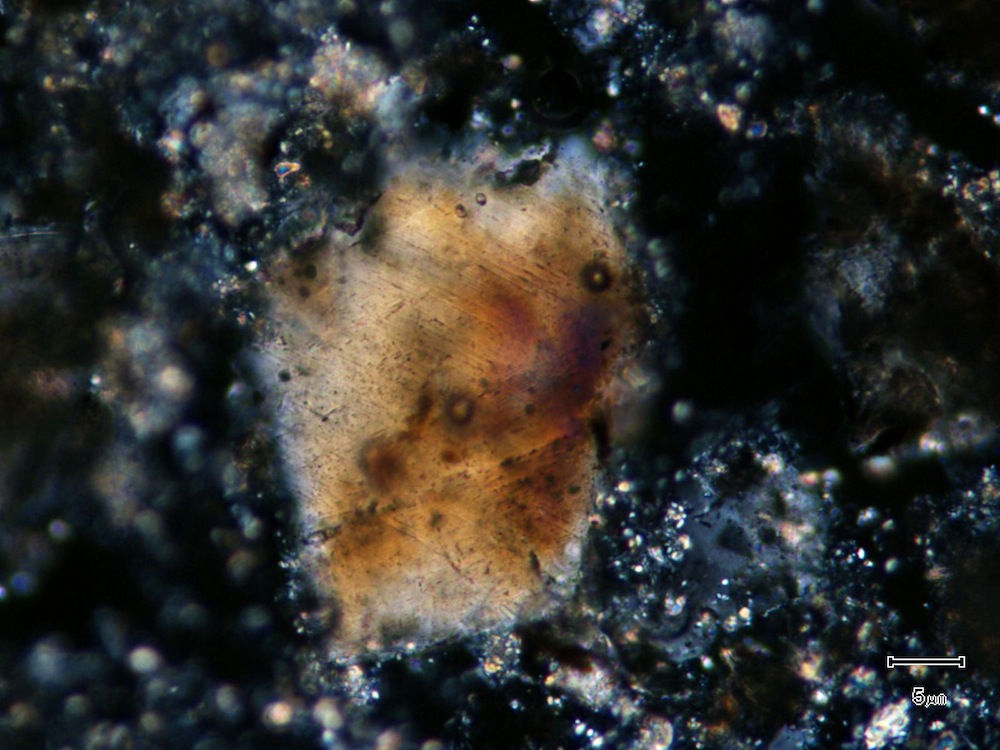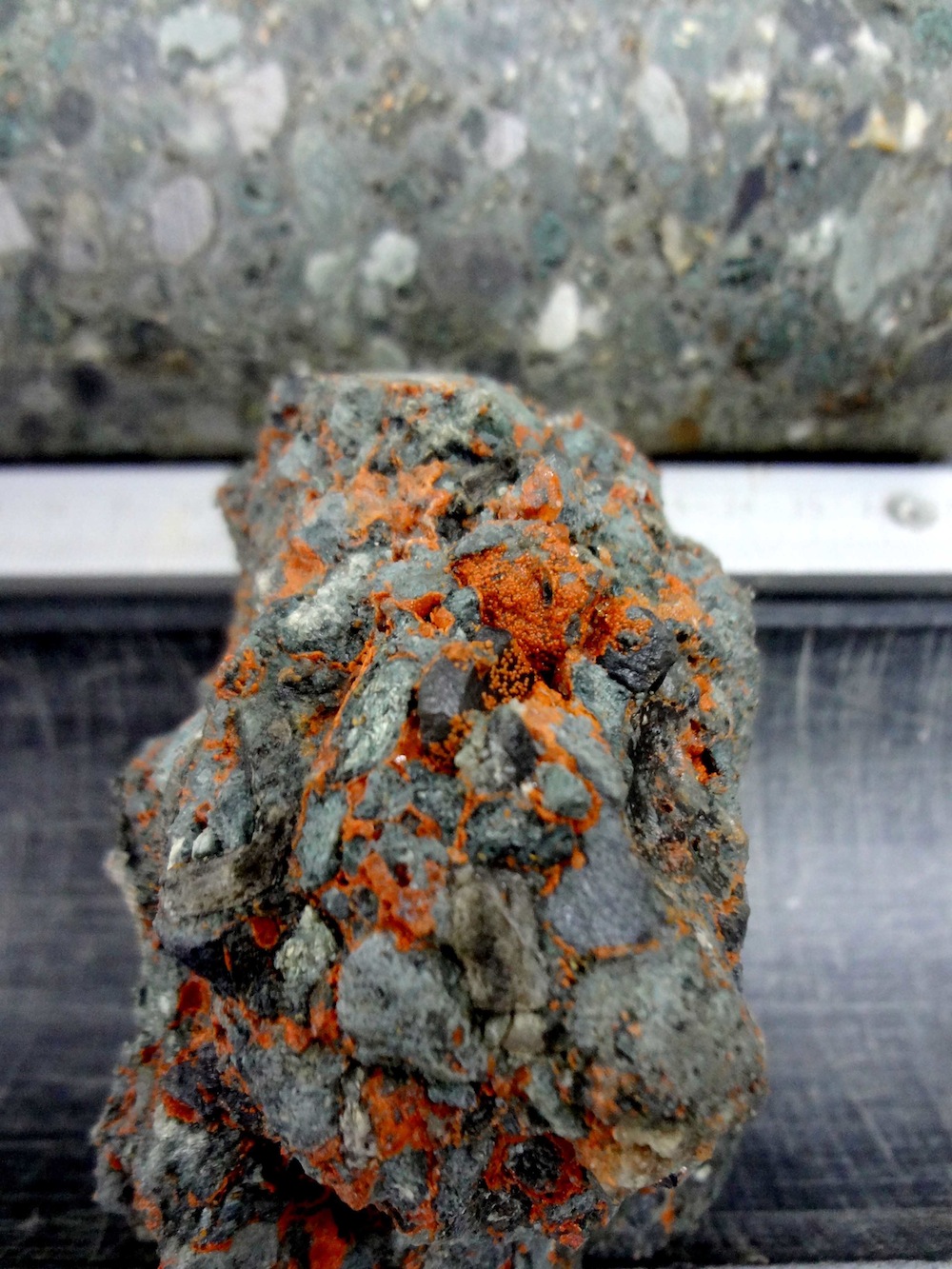Dino-Killing Asteroid May Have Punctured Earth's Crust

After analyzing the crater from the cosmic impact that ended the age of dinosaurs, scientists now say the object that smacked into the planet may have punched nearly all the way through Earth's crust, according to a new study.
The finding could shed light on how impacts can reshape the faces of planets and how such collisions can generate new habitats for life, the researchers said.
Asteroids and comets occasionally pelt Earth's surface. Still, for the most part, changes to the planet's surface result largely from erosion due to rain and wind, "as well as plate tectonics, which generates mountains and ocean trenches," said study co-author Sean Gulick, a marine geophysicist at the University of Texas at Austin. [Crash! 10 Biggest Impact Craters on Earth]
In contrast, on the solar system's other rocky planets, erosion and plate tectonics typically have little, if any, influence on the planetary surfaces. "The key driver of surface changes on those planets is constantly getting hit by stuff from space," Gulick told Live Science.
The researchers in the new study looked at Earth features to learn more about impact effects found on other solar system objects. Major craters sometimes possess rings of rocky hills in their centers. Most of these "peak rings" exist on extraterrestrial rocky bodies such as the moon or Venus, making it difficult to analyze these structures in detail and pin down their origins.

So to learn more about peak rings, scientists investigated a gargantuan crater on Earth that measures more than 110 miles (180 kilometers) across, located near the town of Chicxulub (CHEEK-sheh-loob) in Mexico's Yucatán Peninsula. This crater likely resulted from the epic crash of an object about 6 miles (10 km) wide, and the resulting impact is thought to have ended the age of dinosaurs about 65 million years ago.
The researchers focused on the Chicxulub crater because it has the only intact peak ring on Earth. In contrast, larger craters on Earth, such as Sudbury in Canada or Vredefort in South Africa, "have [been] heavily eroded — neither one has peak rings anymore," Gulick said. "On the other hand, Chicxulub's peak ring is completely preserved."
Get the Space.com Newsletter
Breaking space news, the latest updates on rocket launches, skywatching events and more!
The structures that the researchers wanted to examine were under about 60 feet (18 meters) of water in the Gulf of Mexico. To collect samples from these structures, the scientists traveled to the site in the spring of 2016 in a "liftboat" that could lower three pillars into the seafloor and lift the boat off the water by about 50 feet (15 m). The liftboat then lowered drills into the seafloor and "drilled into the crater for two months, to as low as 1,335 meters [4,380 feet] below the seafloor," Gulick said. (Lifting the boat from the water helps it avoid waves that can rock the vessel and snap the drill pipe.)
In the peak ring samples, the scientists discovered granite that likely once was deeply buried for about 500 million years, Gulick said. "These deeply buried rocks rose up to the surface of the Earth within the first few minutes of the impact," Gulick said. "They showed evidence they experienced a high degree of shock from the impact."
After the impact, "the earth there would have temporarily behaved like a slow-moving fluid," Gulick said. "The stony asteroid would have opened up a hole probably almost the thickness of Earth's crust, almost 30 km [18 miles] deep, and on the order of 80 to 100 km [50 to 62 miles] wide."
And similar to how fluids behave, the earth would immediately flow to fill in the hole, meaning the sides of the crater would collapse inward, he added. [When Space Attacks: The 6 Craziest Impact Craters]
"At the same time, the center of this hole starts reaching upwards, like when you throw a rock in a pond and you get a water droplet rising in the middle," Gulick said. "The center would have risen up from the surface of the Earth as much as 15 km [9 miles], and then become gravitationally unstable, collapsing downwards and outwards."
The end result of this dynamic process is a ring of mountains, or the peak ring, the researchers said.
The study's findings support one of the two main hypotheses that describe peak ring formation, the researchers said. One explanation suggested that peak rings originate closer to the surface: As an impact causes a peak to form in the middle of the crater, the uppermost part of this peak melts, causing the material to disperse into a ring of peaks. The other hypothesis suggested that peak rings formed because impacts dug deep into their targets.
"It turns out the models based on the deeper origins seemed to have gotten it right," Gulick said. "The model these findings support is based on what are known as hydrocode models, which are used for simulating nuclear bomb blasts. Those models simulate an asteroid impacting a target at close to about 20 km per second [44,740 mph], which can get the crust to flow."
Unexpectedly, the researchers noted that rocks from peak rings "got fundamentally altered by their journey upward during the impact," Gulick said. "They end up lower in density by a lot, with their porosity increasing from 1 to 2 percent to 10 percent."
These changes may have proven critical for the evolution of life on Earth, and perhaps on other planets, Gulick said. "When you get rocks with 10 percent more pore space, microbial life living below the surface may find new habitats on the surface," he said. "Our next area of research involves looking at whether ecosystems can get started by craters."
The scientists detailed their findings online today (Nov. 17) in the journal Science.
Original article on Live Science.
Join our Space Forums to keep talking space on the latest missions, night sky and more! And if you have a news tip, correction or comment, let us know at: community@space.com.

Charles Q. Choi is a contributing writer for Space.com and Live Science. He covers all things human origins and astronomy as well as physics, animals and general science topics. Charles has a Master of Arts degree from the University of Missouri-Columbia, School of Journalism and a Bachelor of Arts degree from the University of South Florida. Charles has visited every continent on Earth, drinking rancid yak butter tea in Lhasa, snorkeling with sea lions in the Galapagos and even climbing an iceberg in Antarctica. Visit him at http://www.sciwriter.us










